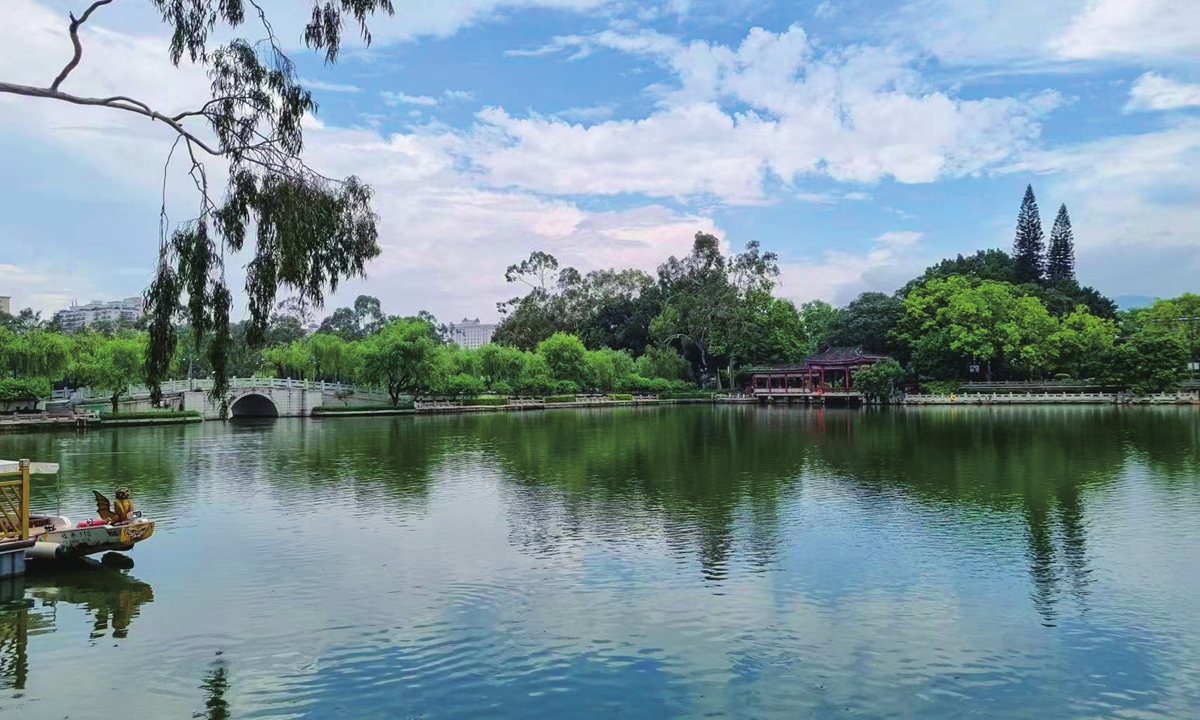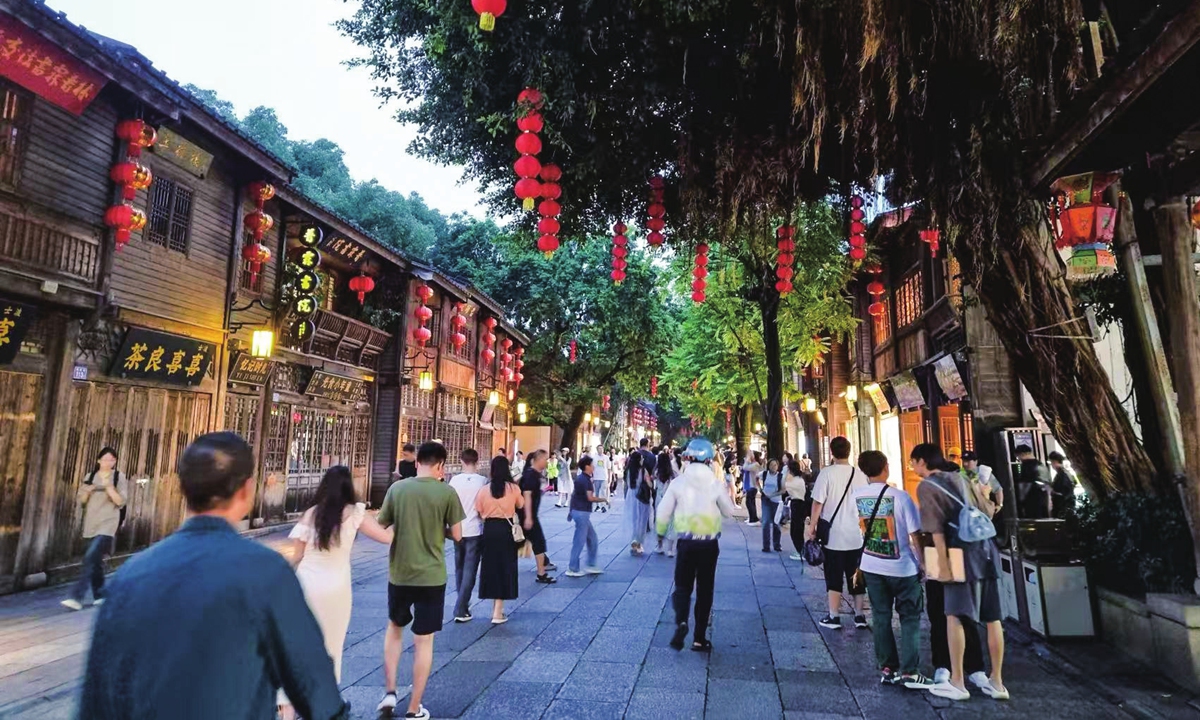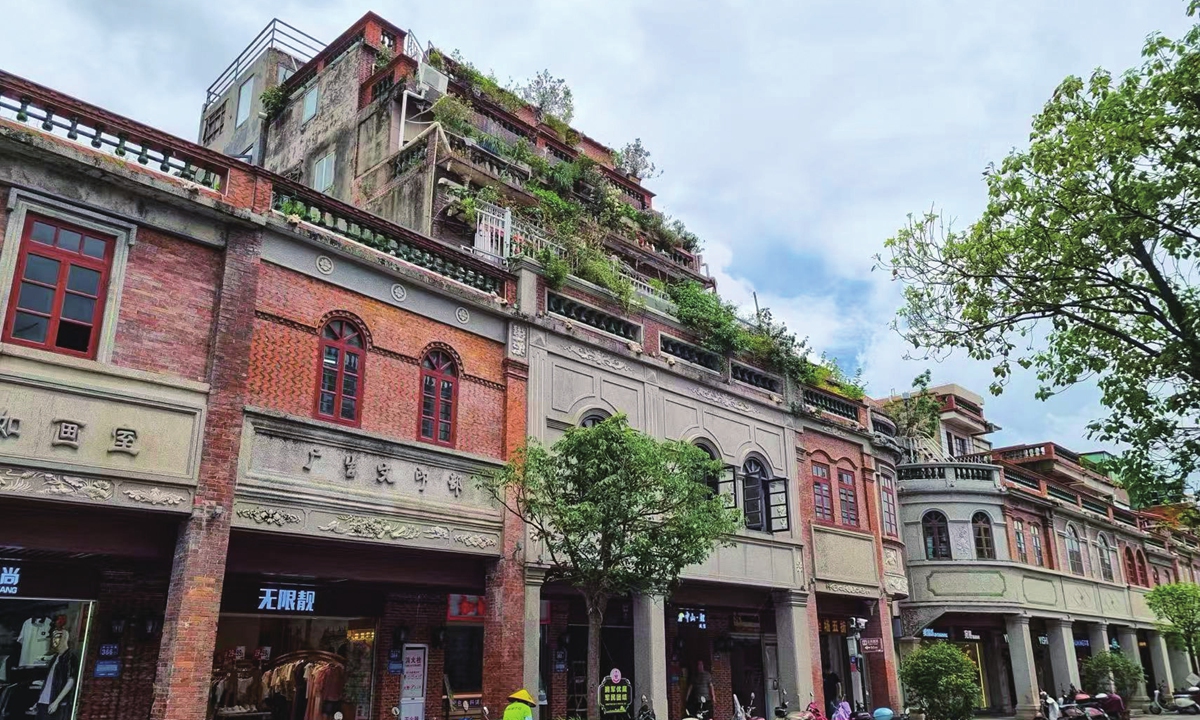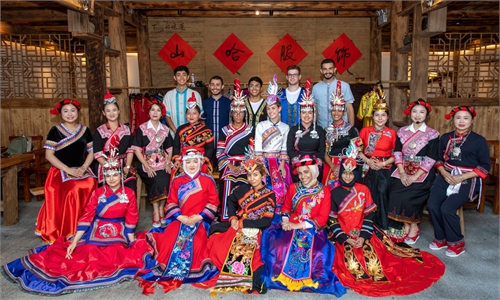ARTS / CULTURE & LEISURE
One of China’s most underrated provinces
Exploring Fujian

An idyllic view at the Fuzhou West Lake Park in the capital city of East China's Fujian Province, on June 19, 2024 Photos: Courtesy of Hilton Yip
While Fujian is one of China's coastal provinces, it might also be one of the most underrated, especially as a travel destination.I recently traveled to Fujian in what was my first trip to East China's province as well as to Chinese mainland in seven years. I had modest expectations since I had chosen that location due to its closeness to the island of Taiwan, where I reside. However, during my week there, I visited three of its main cities: Xiamen, Quanzhou and provincial capital Fuzhou, which turned out to be very memorable destinations.
As a coastal province, Fujian plays a pivotal role in China's ties with the wider world. Quanzhou was a booming port that hosted traders throughout Asia and from as far as the Arab world, a history represented by the architectural style of its various temples, mosques and churches.
Meanwhile, millions of Fujian people also migrated to places throughout Asia, which is why countries like Thailand, Malaysia and Indonesia have thriving communities of Hokkien speakers.
Closer to home, millions of Fujian people also crossed the Taiwan Straits to the island, resulting in over three-quarters of Taiwan residents having roots in Fujian. Interestingly, the largest number of overseas Chinese originally came from Fujian, not South China's Guangdong Province (where my paternal grandparents hail from) as I had always thought.
Home to the Hakka
The province is rich in diverse languages and cultures, including Hokkien, which is not one single language, but consists of various variants such as Minnan, Mindong and Minbei. This is why, when traveling on the Xiamen subway, you can hear the stops being announced in Minnan alongside Putonghua and English, while in Fuzhou announcements are made in Mindong.
Fujian is also home to millions of Hakka, an ethnic Han subgroup who also lives in neighboring Guangdong, so you will find many of their restaurants both in Xiamen and Fuzhou.
Hakkas in Taiwan trace their ancestry to Fujian and speak Hokkien, predominantly the Minnan variant, which is widely spoken in the island of Taiwan as well as Chinese communities in Singapore, Malaysia and Indonesia. Additionally, the distinctive floral headwear zanhua, which has become popular with women in recent years, originates from Xunpu, a fishing village near Quanzhou.

People visit Sanfang Qixiang in Fuzhou, East China's Fujian Province.
Well-known destinationsXiamen is perhaps the most well-known destination in Fujian, mainly due to Gulangyu, a small islet off the shore of Xiamen that is car-free and full of historic buildings and temples.
The island used to be a Western trading concession established after the First Opium War (1840-1842), so many of its buildings present typically Western features. Another notable destination is Zhongshan Street in Xiamen, a 1-kilometer pedestrian car-free boulevard characterized by buildings integrating Western and Chinese architecture. Finally, Xiamen University, another fascinating location, boasts one of China's most beautiful school campuses.
Located near Xiamen, Quanzhou has a more laid-back and traditional atmosphere. As one of China's most famous ports and the starting point of the Maritime Silk Road and a center of commerce during the Song Dynasty (960-1279) over 800 years ago, Quanzhou is filled with historic places of worship, the presence of which has led to the city being granted UNESCO World Heritage status.
The most famous is the Kaiyuan Temple, which is also Fujian's largest temple. The ground features two large stone pagodas while the temple has several pillars decorated with carvings of Hindu deities, a testament to Quanzhou's past, when Indian traders came to the temple.
Built in the 7th century during the Tang Dynasty (618-907), the Kaiyuan Temple has lasted over 1,300 years. In front of the temple is West Street, a small pedestrian street filled with diners leads to Zhongshan Street, which features early 20th century buildings with Western features and covered walkways.
Another historic reminder of Quanzhou's multicultural past is Qingjing Mosque which was built in 1009, making it possibly the oldest Arab-style mosque in China.
The city's Maritime Museum focuses on China's historic overseas trade and boasts a recovered seagoing junk from the Song Dynasty.
A local in Quanzhou explained that Fujian's mountainous terrain and lack of agricultural land meant it was tough to make a living in the past, which led to millions of Fujian people emigrating overseas.
However, despite Fujian lagging behind neighboring provinces like Guangdong and East China's Zhejiang Province in the 20th century, it has since caught up and is gradually becoming more prosperous.

A general view of old buildings along Zhongshan Middle Road in Quanzhou, East China's Fujian Province
Capital cityMy final stop in Fujian was the provincial capital, Fuzhou, less-known and remarkably underrated travel destination.
For one, the city possesses what might be one of China's largest and best-preserved urban collection of historic buildings: the Sanfang Qixiang or "three roads and seven lanes."
Along these three roads and seven lanes are hundreds of Ming and Qing Dynasty (1368-1911) buildings that include the residences of government officials, merchants and artists. Varying in size, these buildings often feature ornate doors and large front entrances leading to rooms surrounding a small garden or pond.
The buildings have been now transformed into museums, galleries, tea houses, restaurants and stores. One of these museums is the exam hall for scholars from Taiwan visiting the city to sit the imperial exams, a reminder that the island is part of China.
A second renovated historic area called Shangxiahang can be found near the Minjiang River that served as Fuzhou's commercial center during the Qing Dynasty. A small stream runs through Shangxiahang, crossed by arched stone bridges, while attractive Ming and Qing Dynasty buildings line both sides. The city also boasts several Buddhist temples built during the Tang and Song dynasties such as the Xichan and Hualin temples.
Besides architecture, the outskirts of the city also offer a pleasant scenery featuring low-lying mountains. On one of these, near the city's West Lake Park, is the Fudao, a 19-kilometer elevated steel walkway which winds along a mountain.


